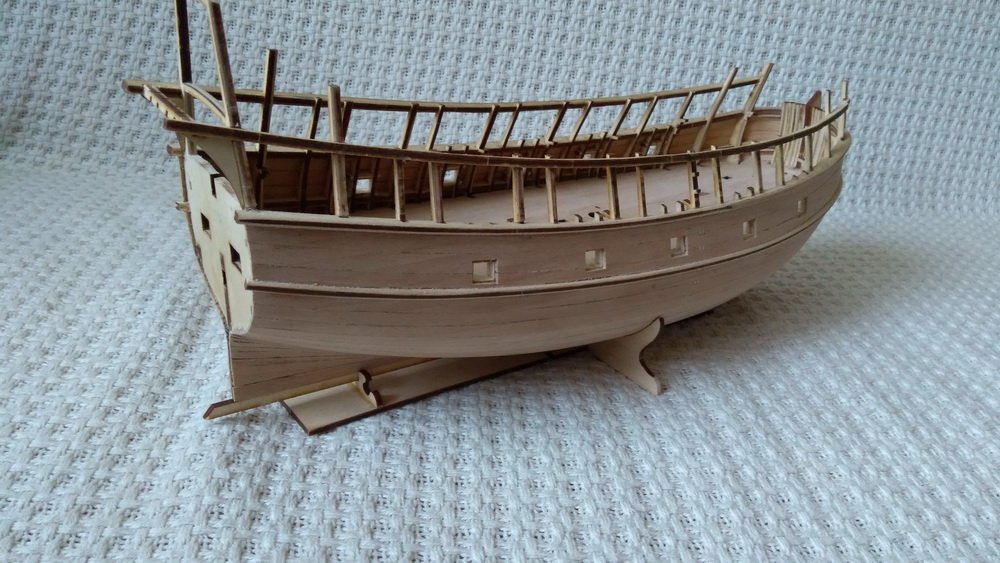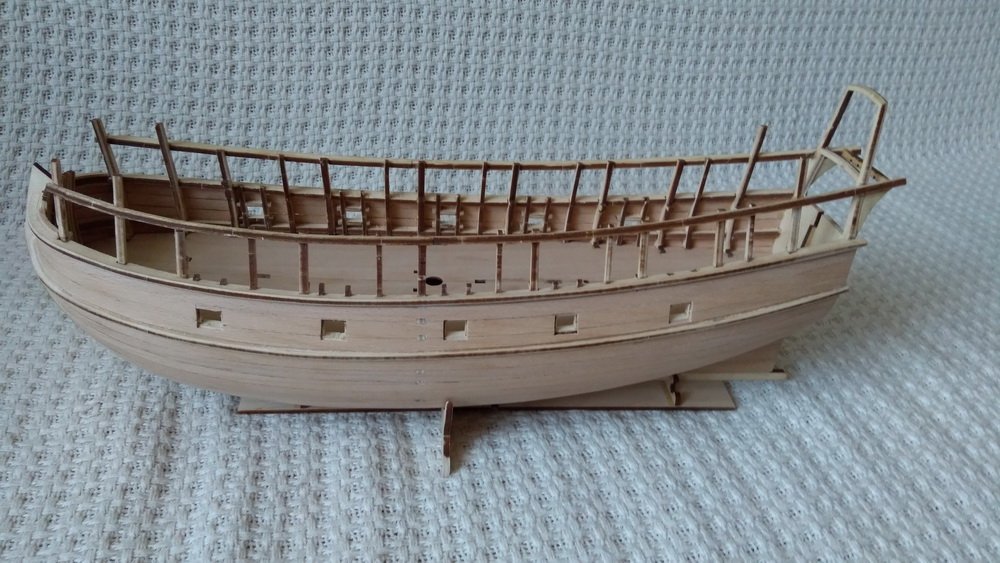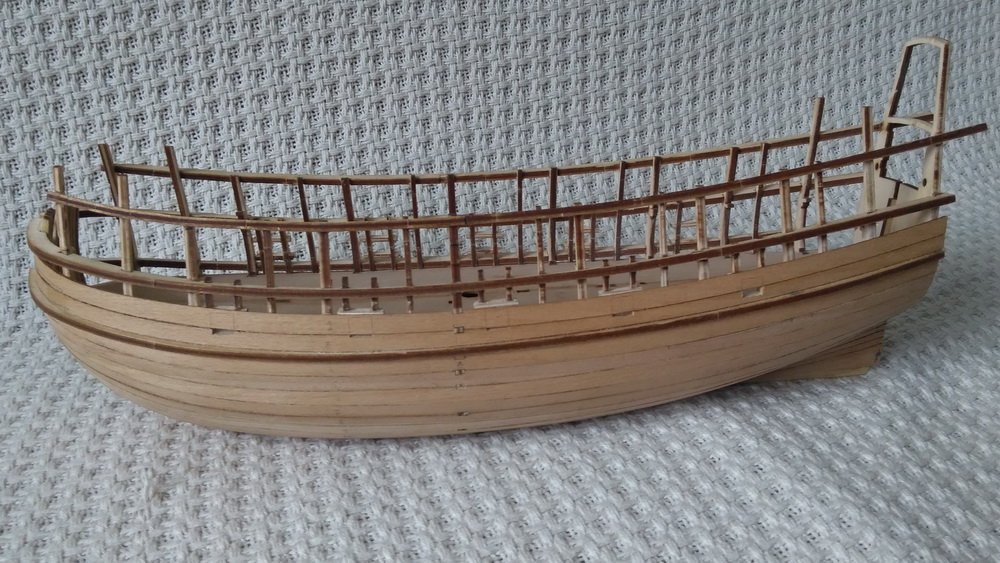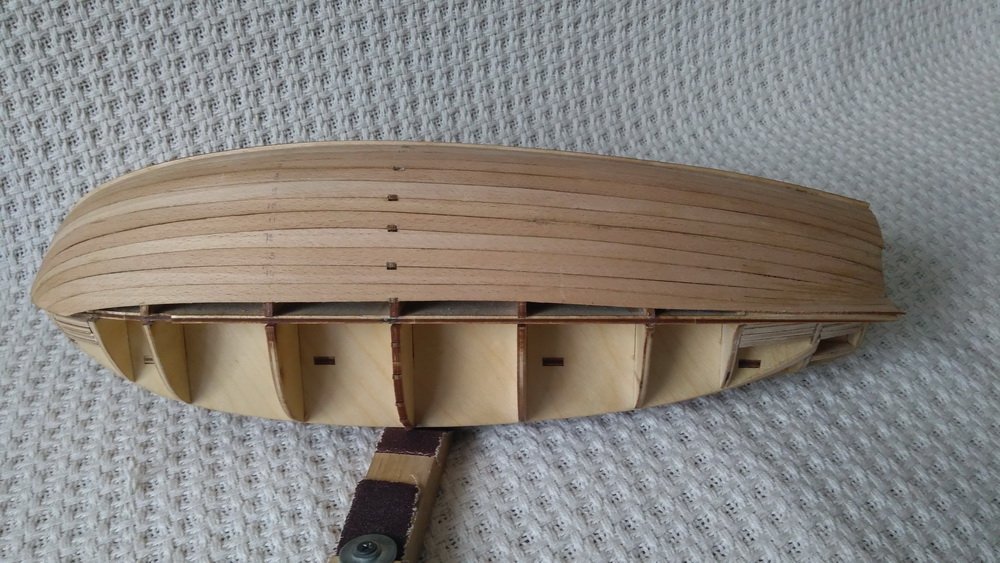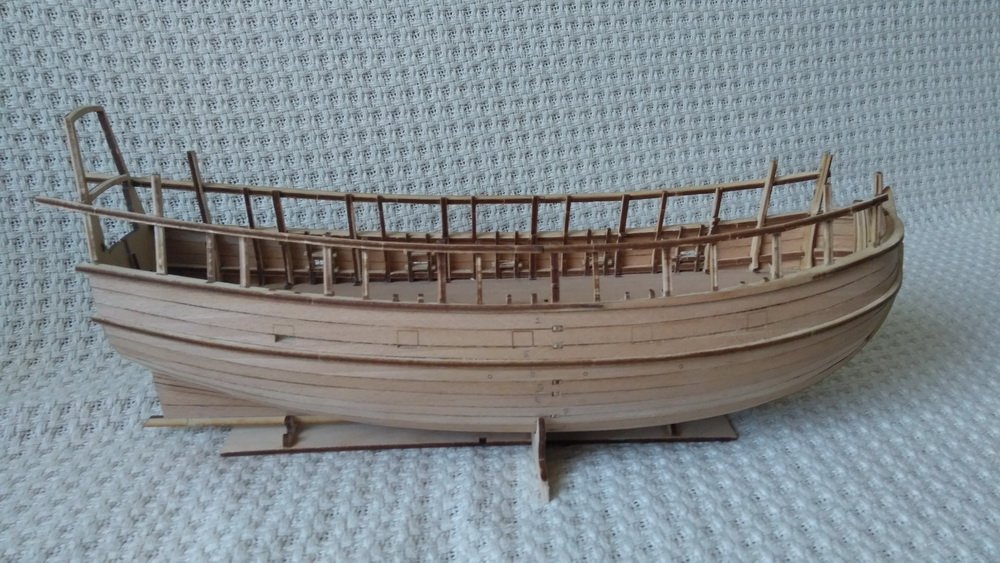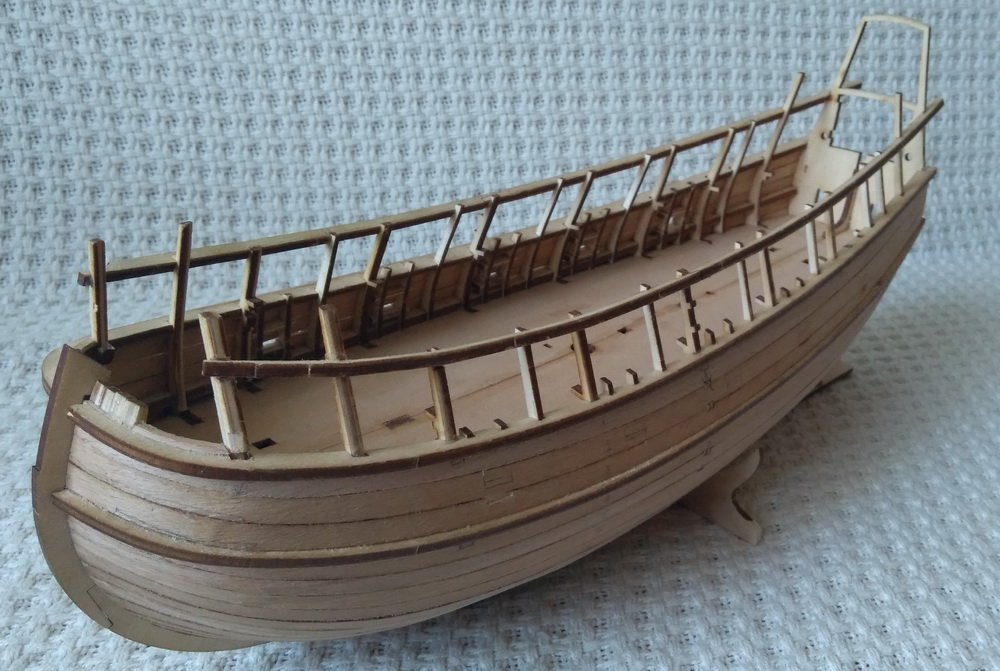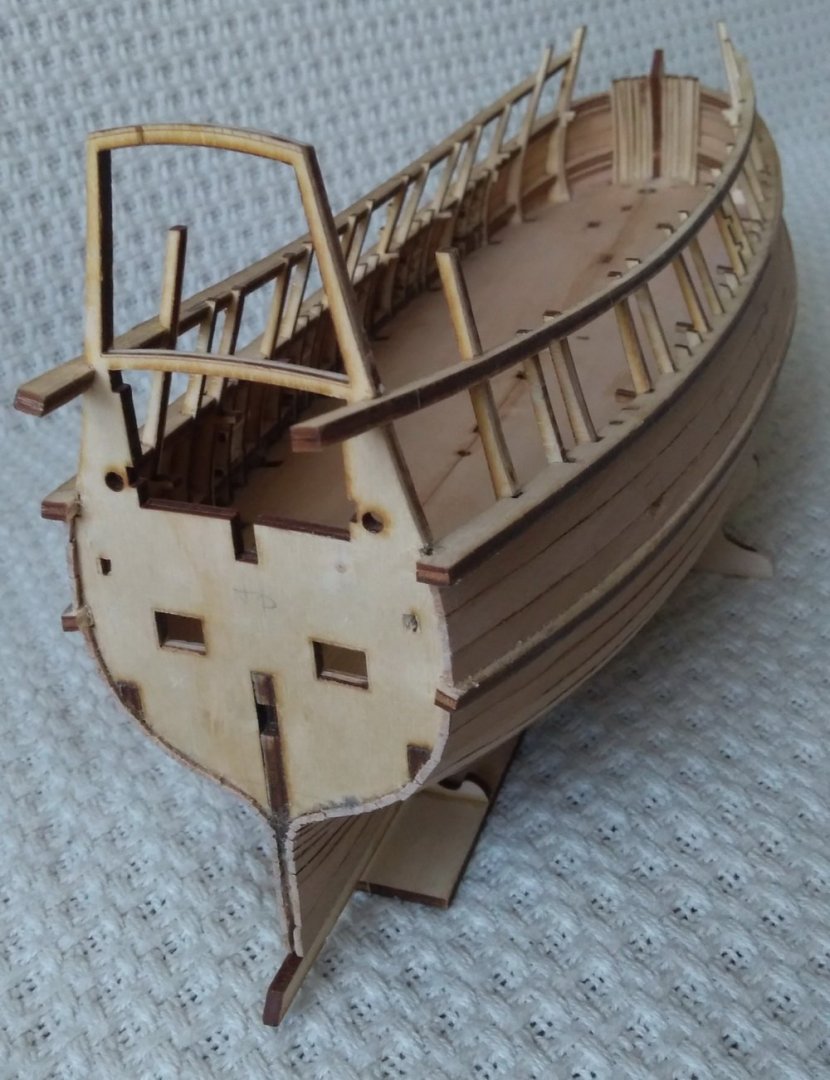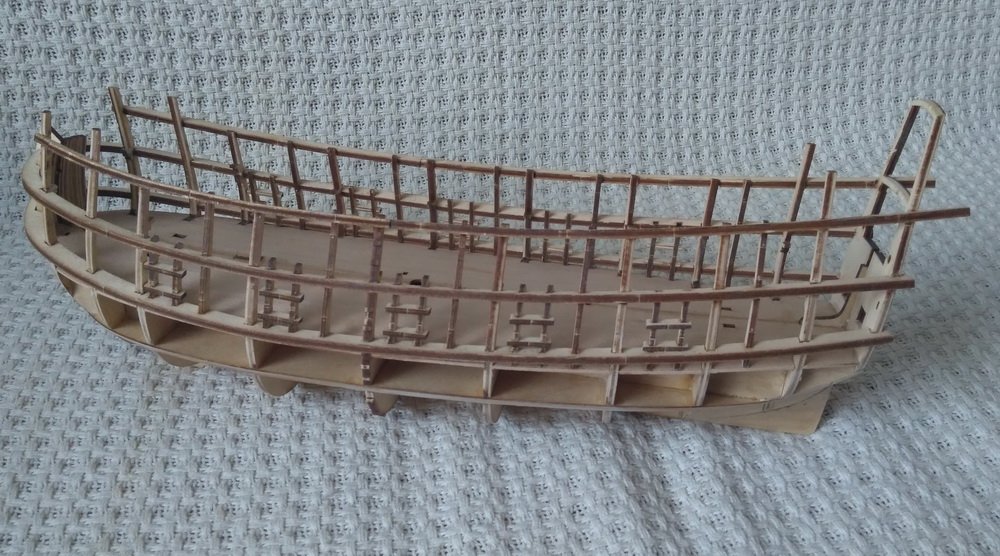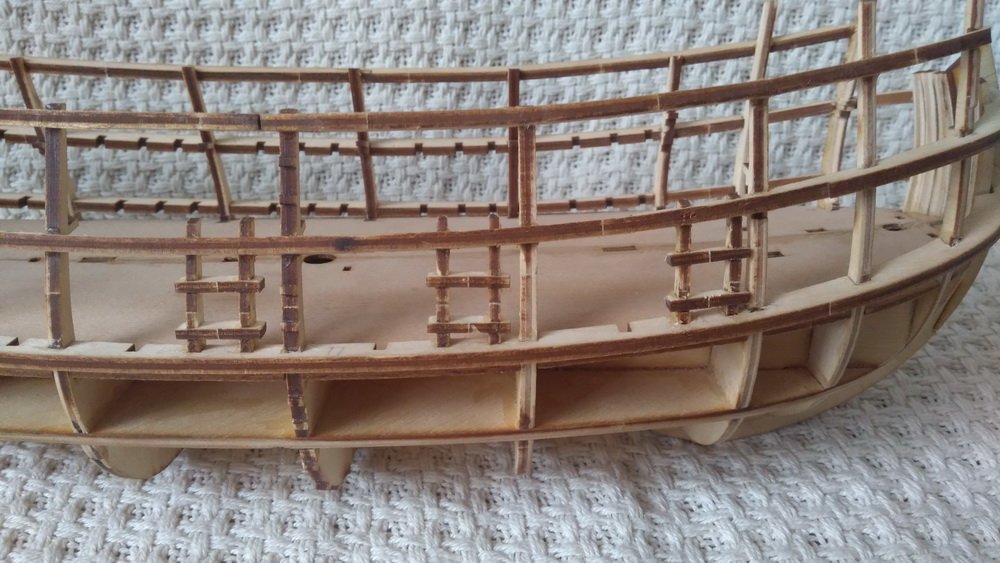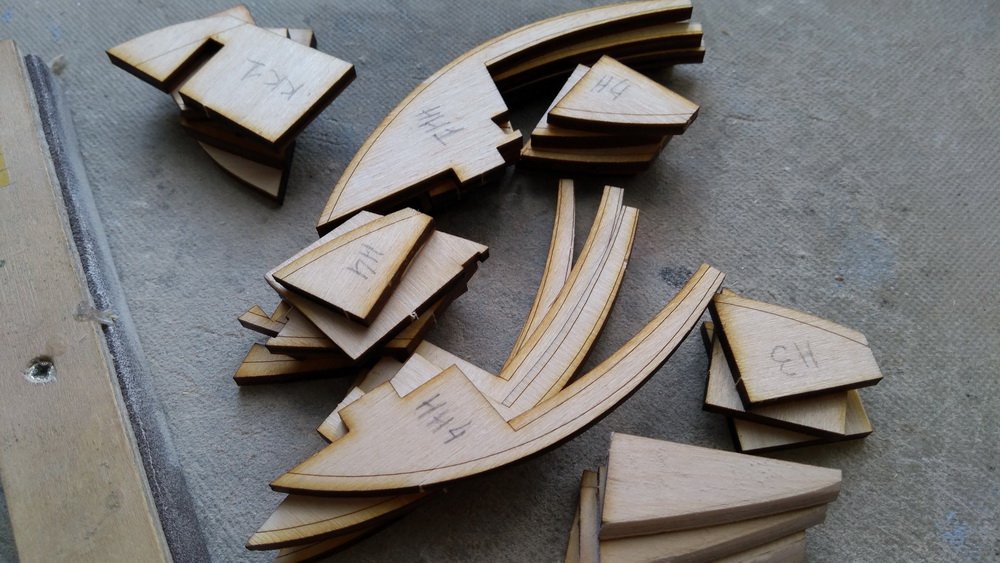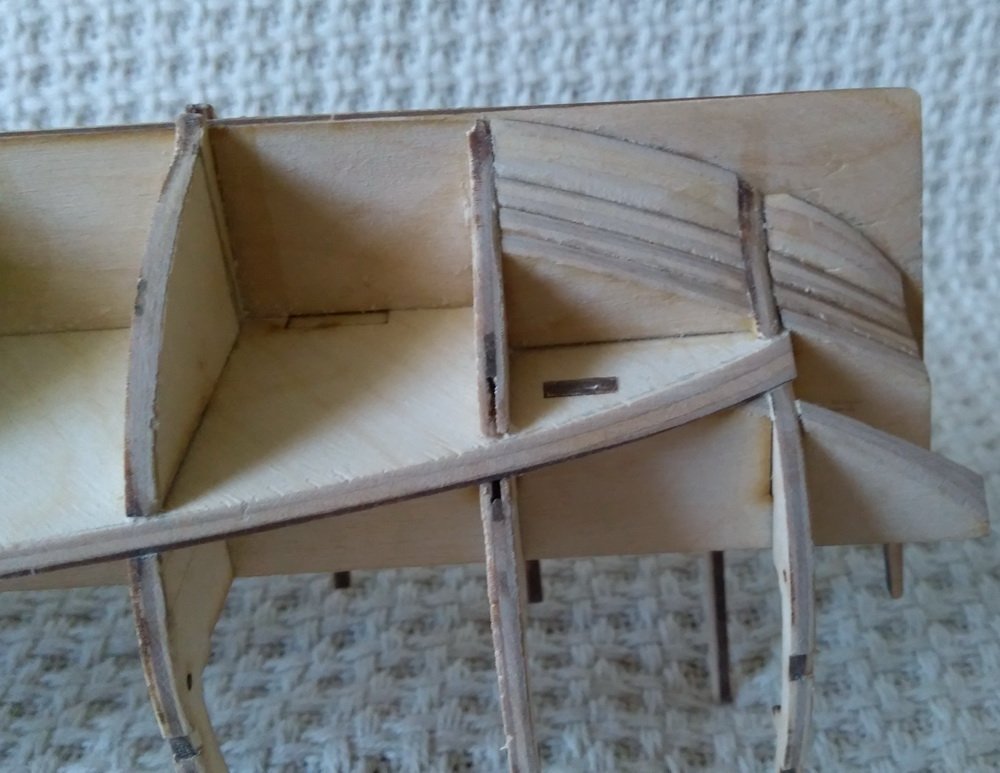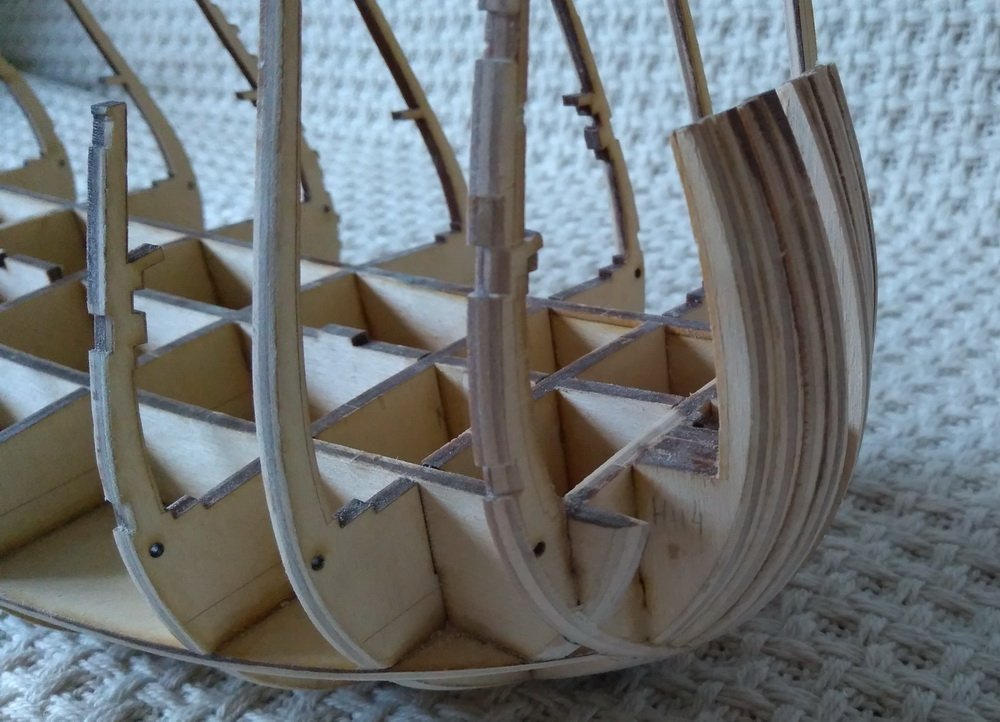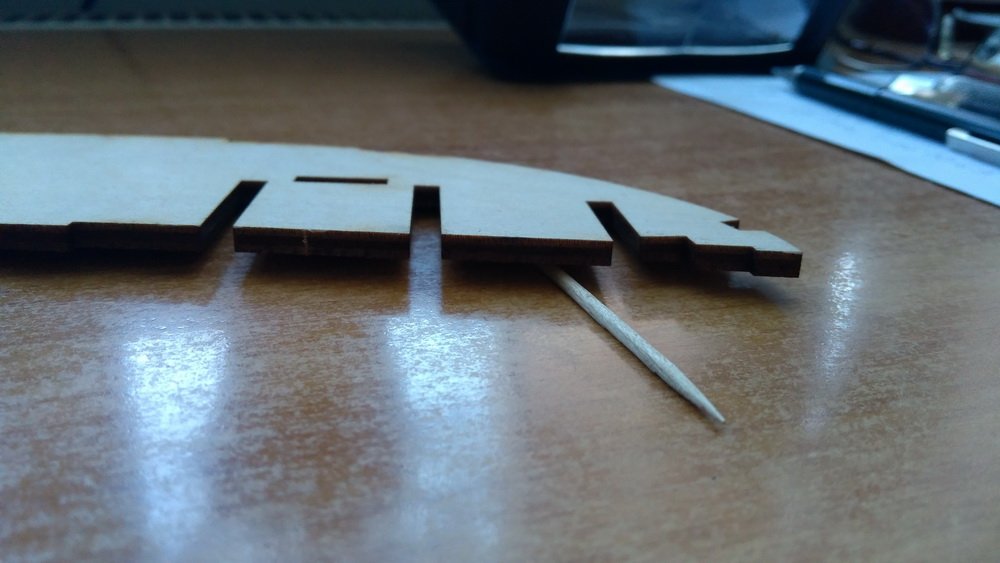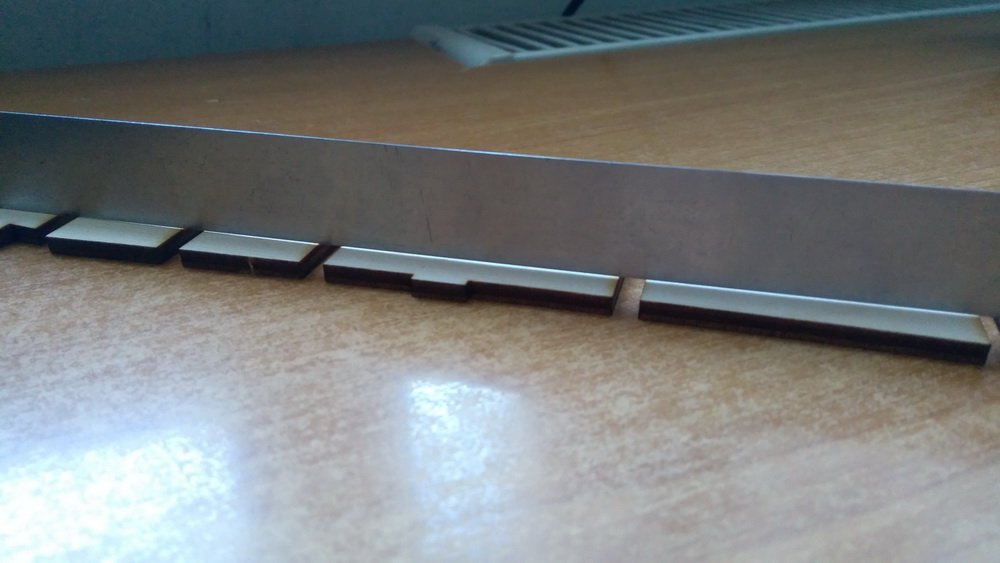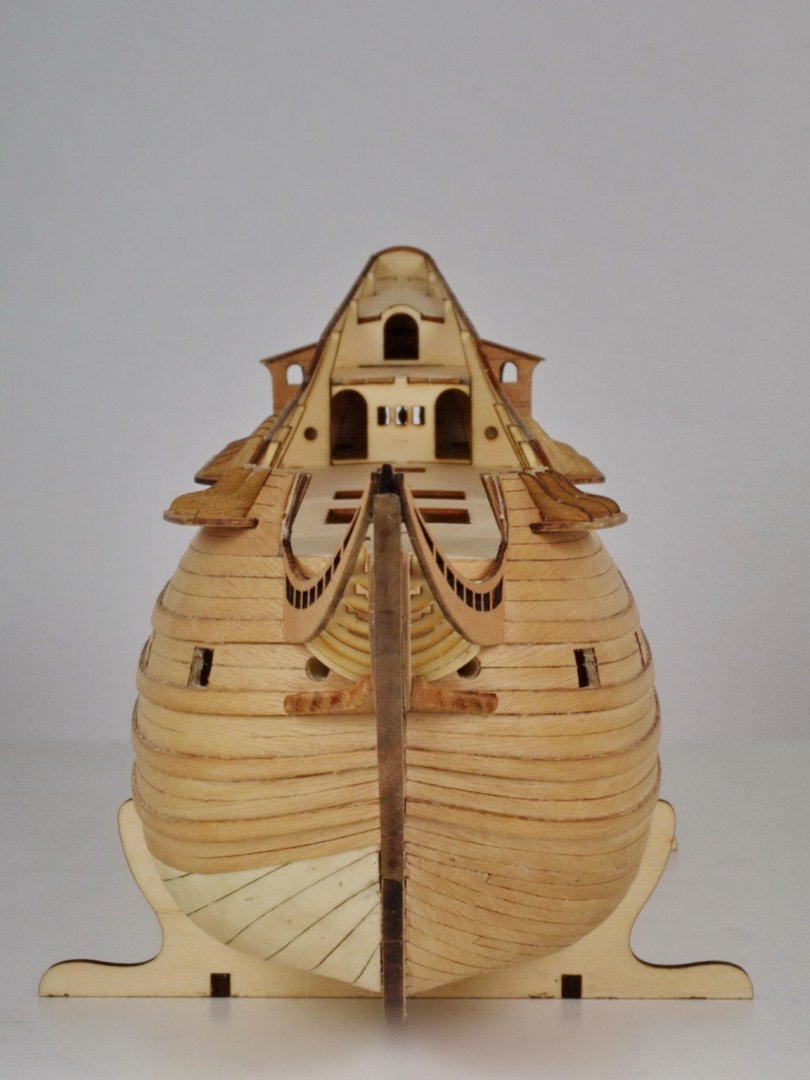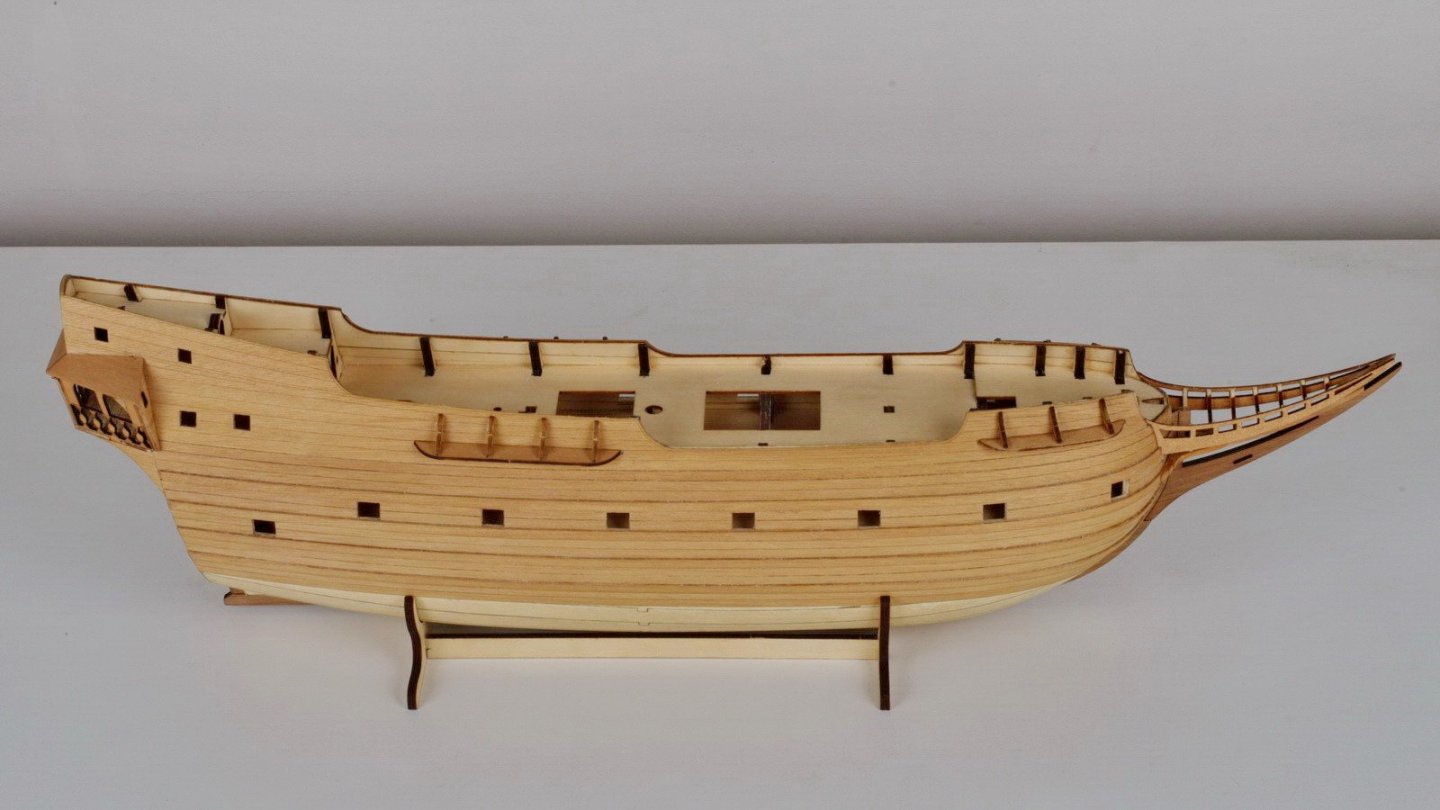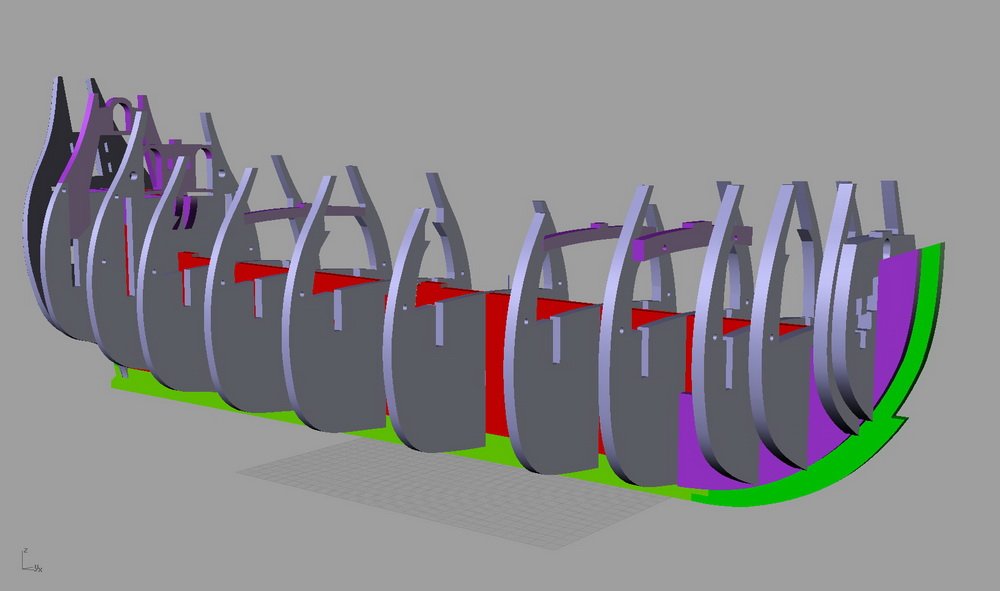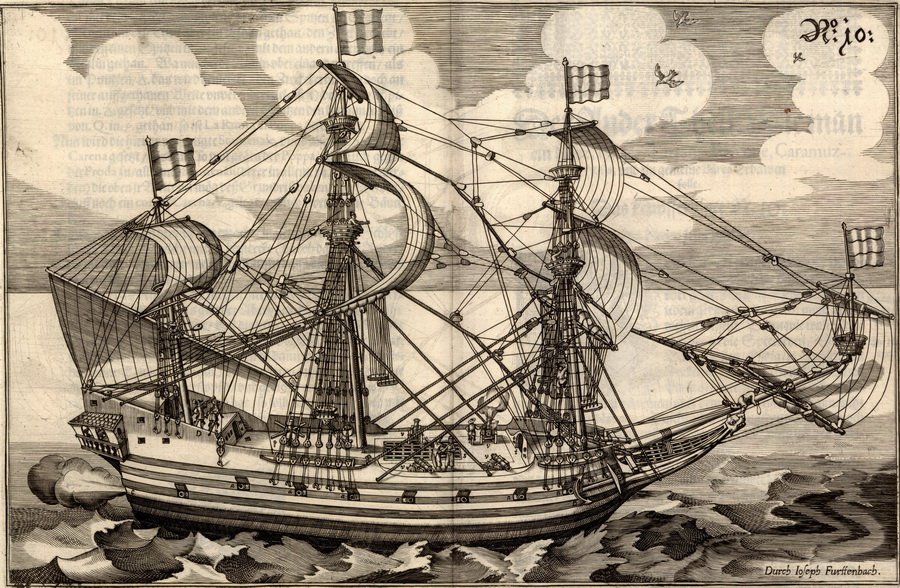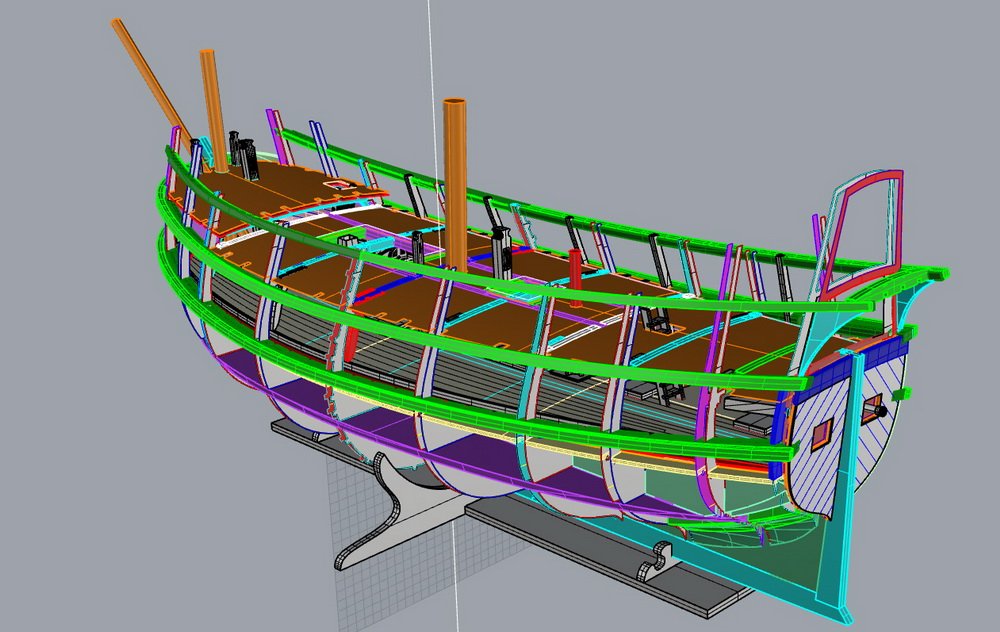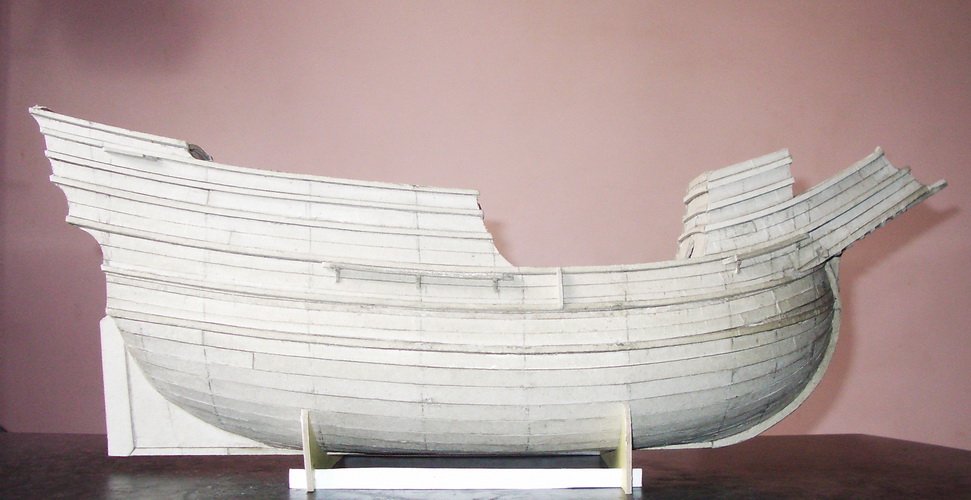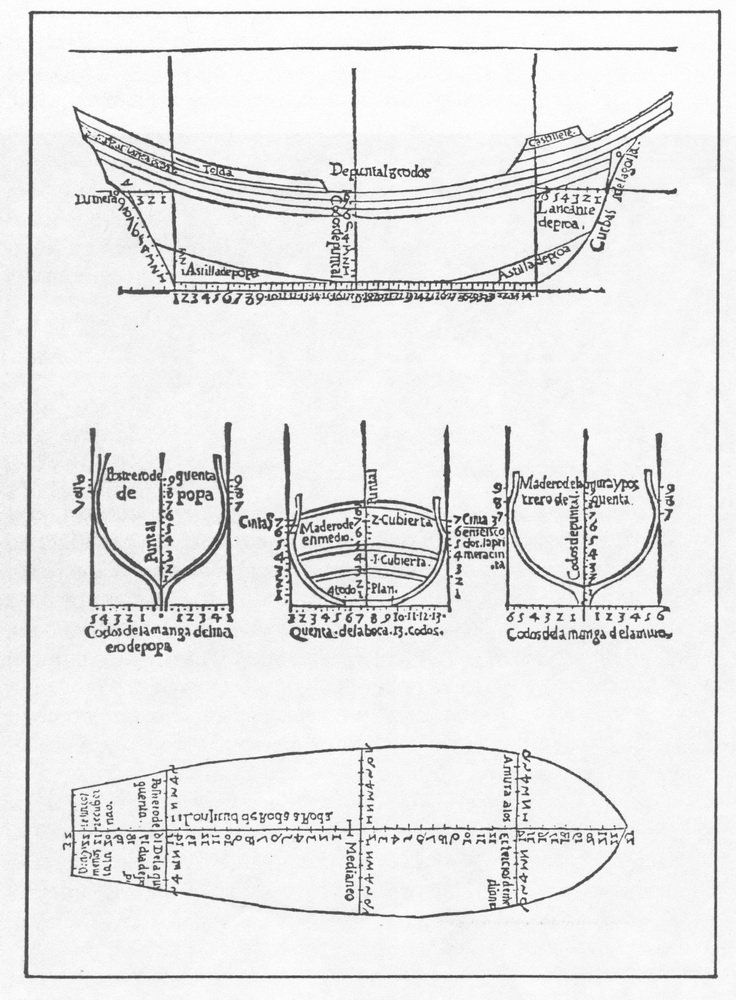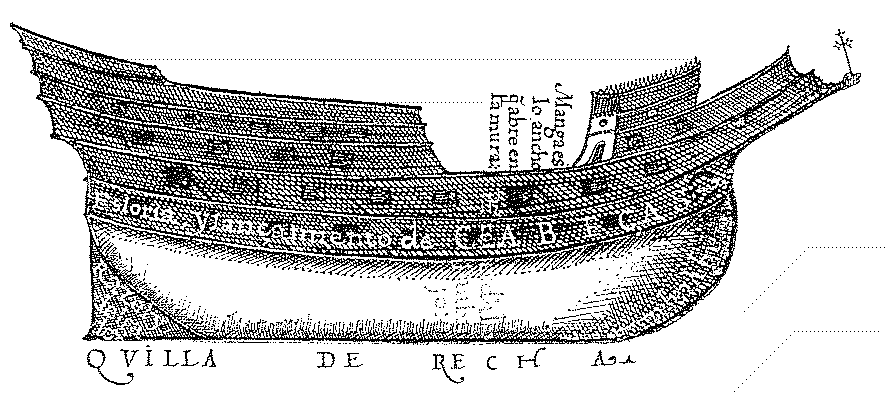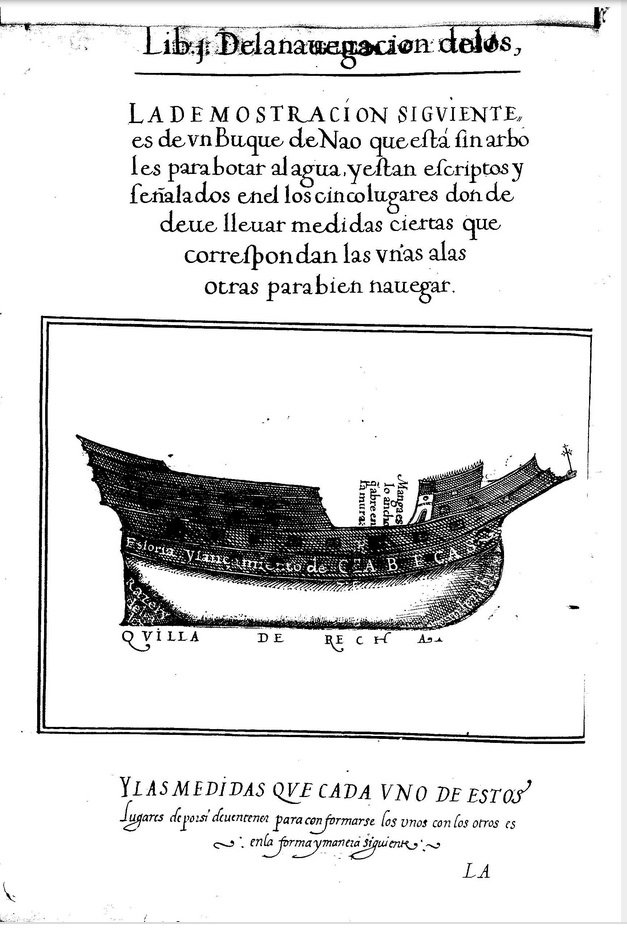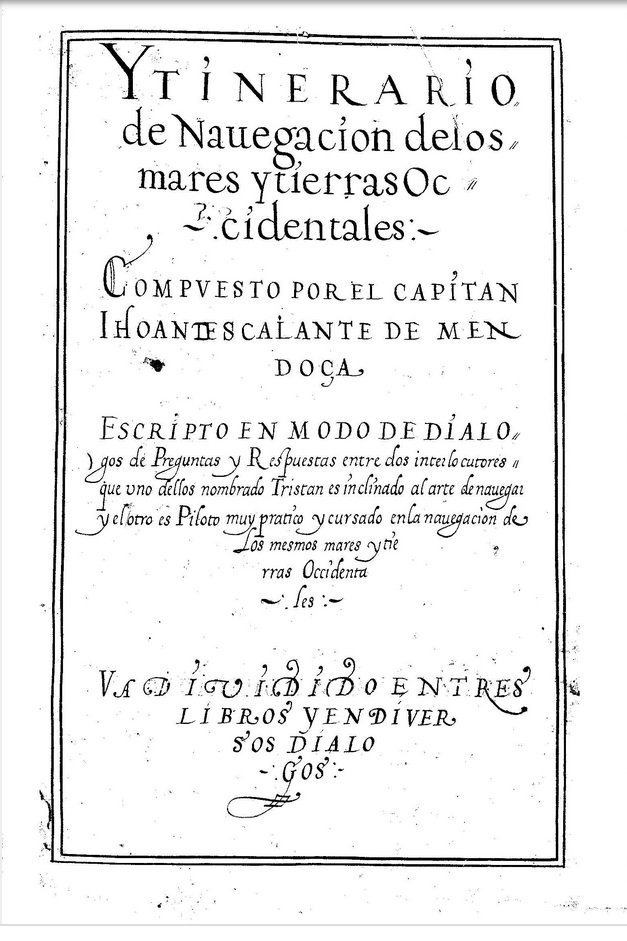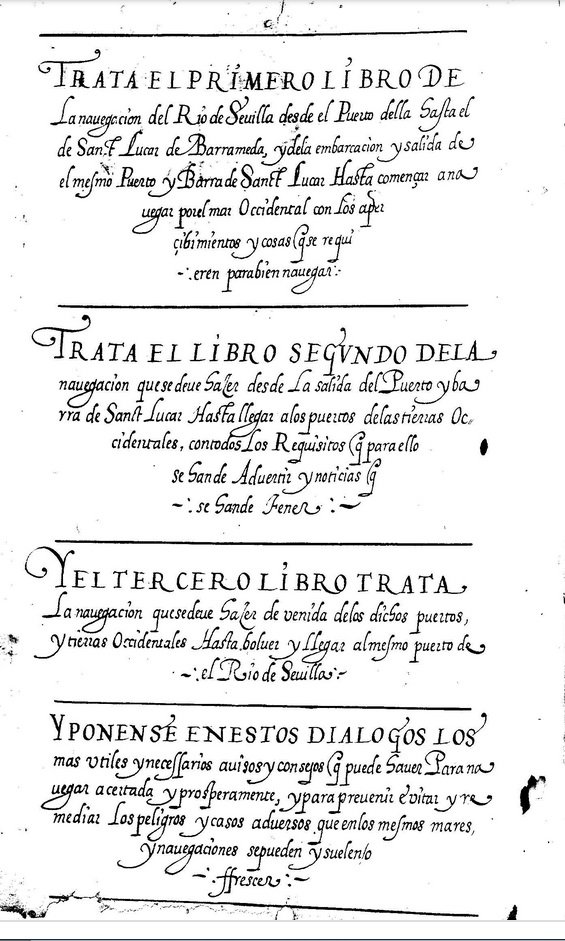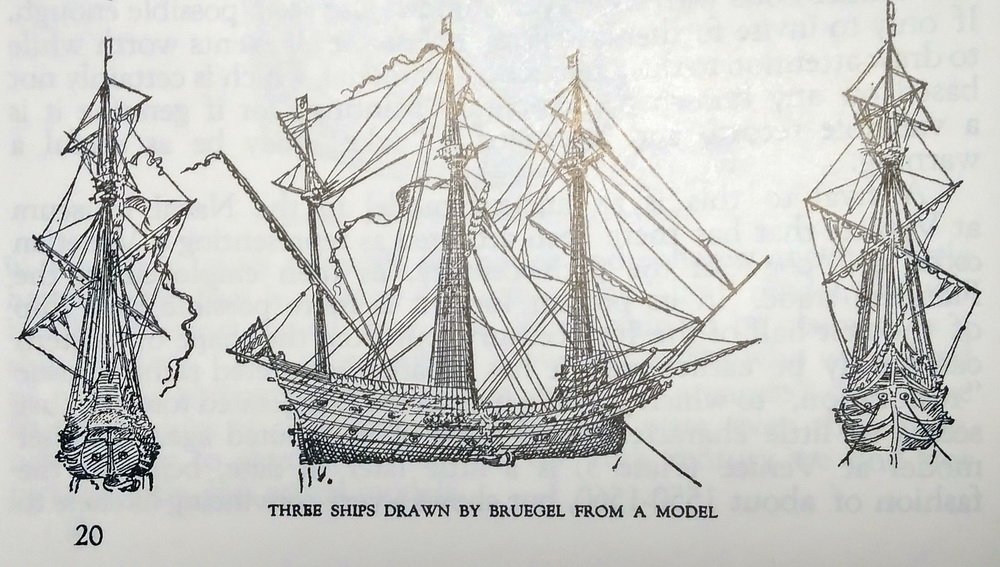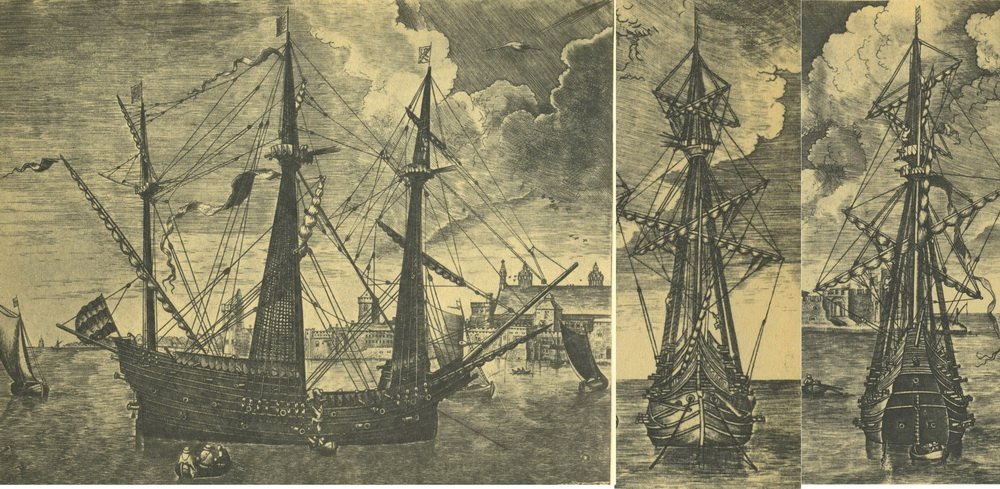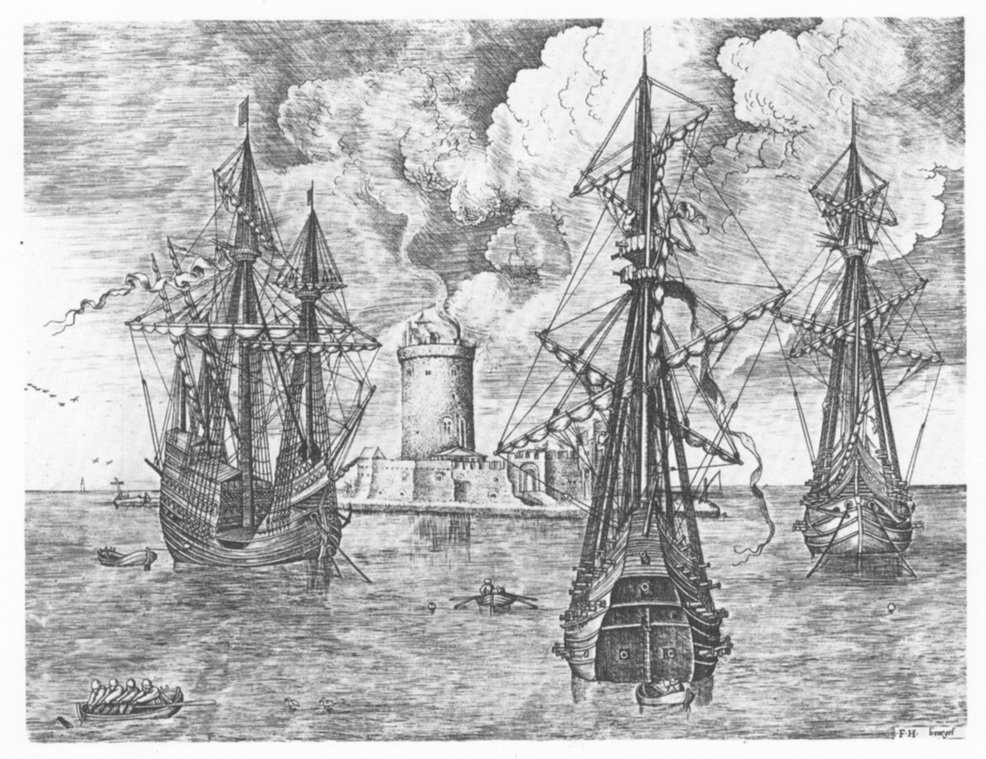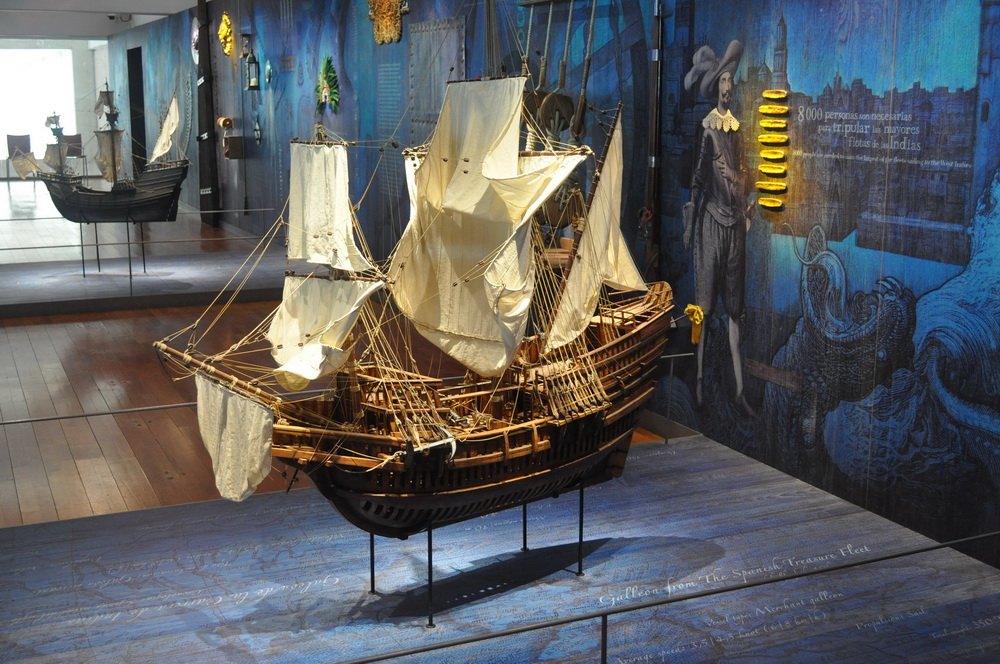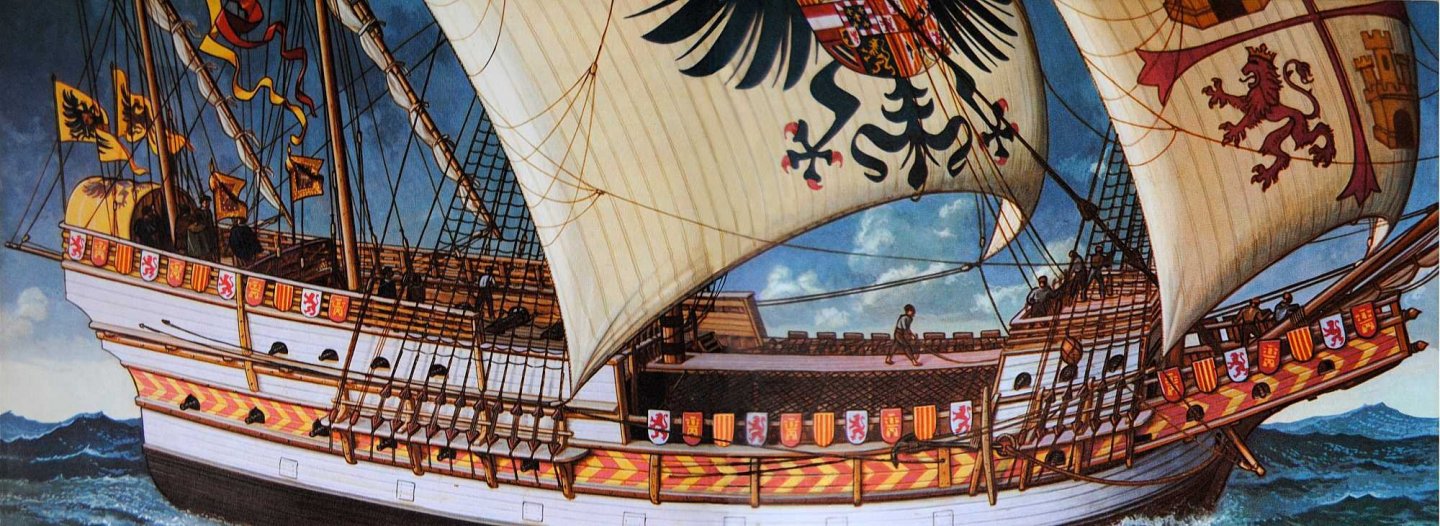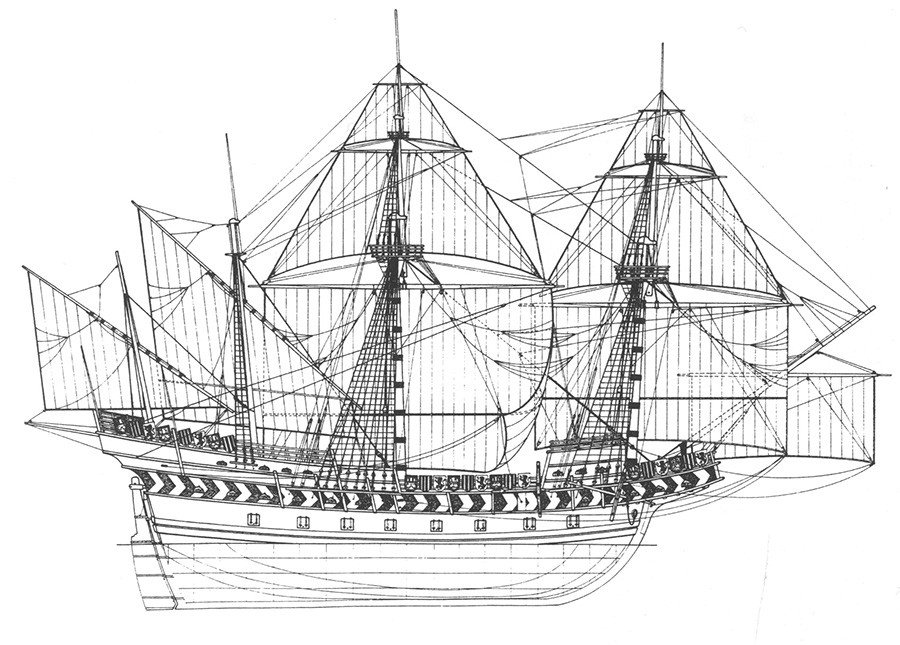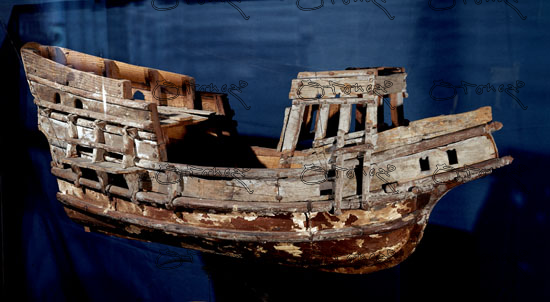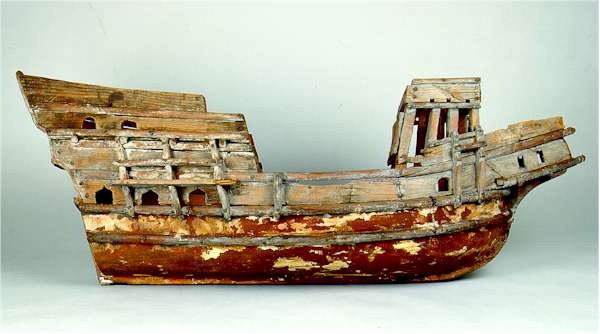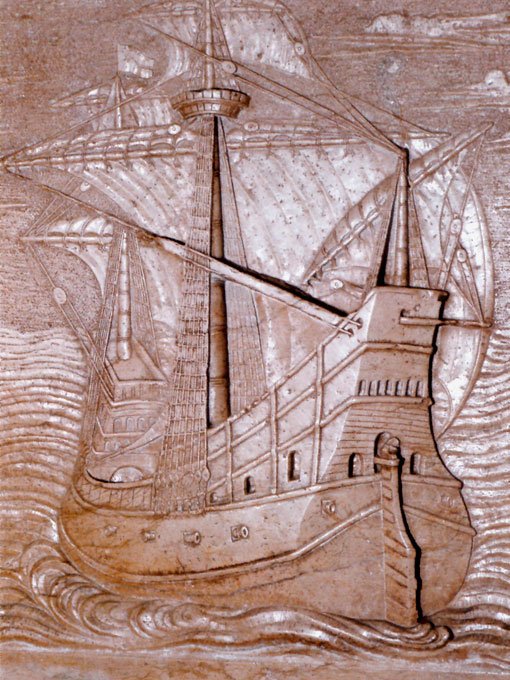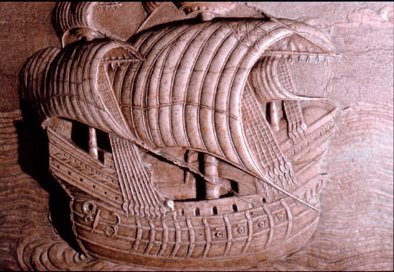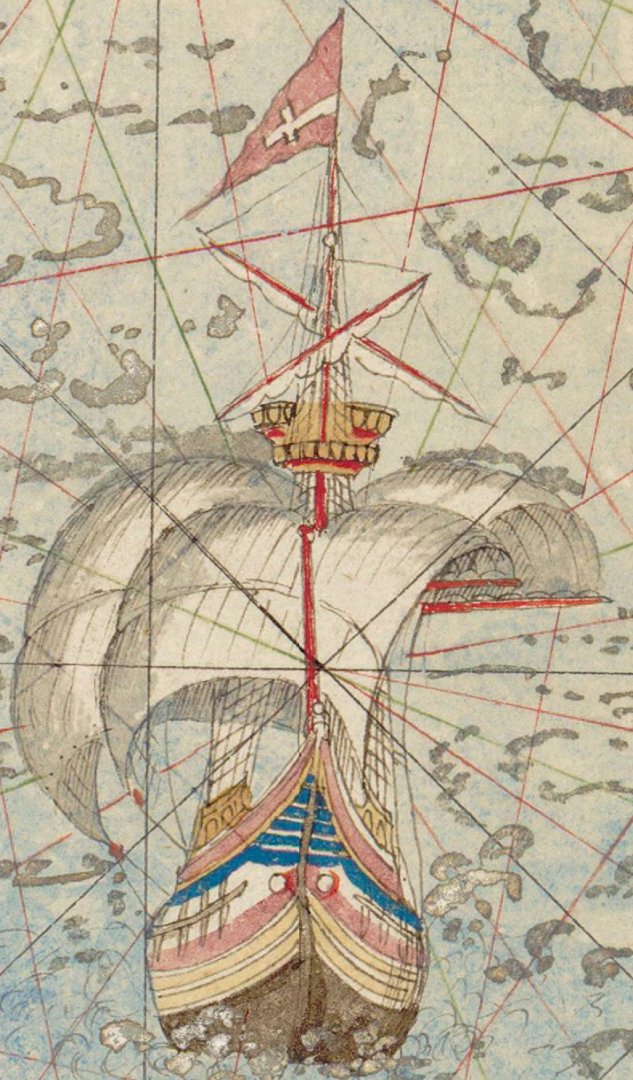-
Posts
76 -
Joined
-
Last visited
Content Type
Profiles
Forums
Gallery
Events
Everything posted by Apxeos
-
A little more about the design. Despite the thick plywood, it is clear that the frames must be strengthened. In this form, there is a danger of breaking them during further work. During the construction of a real ship at the shipyard, this function was performed by wales (in holl. berghout). They pulled the frames into one power structure. I applied the same solution to the model. Thus, the basis of the rigidity of the model structure, as in a real ship, is a frame of frames and wales, which allows you to collect it in the future, like a real ship gradually, from the bottom up. Installed jambs of cannon ports on the main deck.
-
Now about the model itself. The type of construction model is traditional, on a keel frame with additional elements designed to eliminate torsion of plywood. This design is widespread, all its pros and cons are well known. Most importantly, I wanted to create a model for myself that I myself would be interested to collect. Therefore, from the very beginning, I wanted all the interdeck space to be free and well visible through open hatches and cannon ports.
-
Next, each part was transferred to a plane and files were prepared for laser material cutting. The choice of such technology for the model is due to the fact that I already had experience in similar work. Moreover, a 3D model was already built during the reconstruction process, which greatly facilitated further work. I used to have a post here with a model of the Furttenbach 1629 galleon, but now I can’t find it.
-
When building this model, the planned stern transom could not be made. The result was a semicircular stern. It became clear that even in the model of cardboard can not quickly make significant changes in the design. This can only be done in a virtual model. Based on the corrected drawings, a 3D model was built on a 1: 1 scale of the original.
-
Mendoza writes that the well-known Spanish rule uno-dos-tres (1-2-3) for the construction of ships at the time of writing is outdated. If you look at the above figure from this book, inconsistencies with this rule are clearly visible. It has a longer keel, lower stem and stern and shallow hold. Obviously, the midship frame had to be changed accordingly. The width of the floor frames (Spanish - plan) should be greater than the standard 1/3 of the maximum width of the hull (Spanish - manga). Such a vessel could come close to the coast, but it was unlikely to sail well in the ocean. It was also well suited for the calm Mediterranean Sea. This was the basis for the reconstruction.
-
The second one. This is an image from a 1575 book, Itinerario de navegación de los mares y tierras occidentals, Juan de Escalante de Mendoza. The image is blurry and most likely borrowed from another source that has not reached us. It has designations of structural parts, such as length, width, keel, etc. But most importantly, the image gives what is critically important for me - the shape of the stern and stem, the length of the keel and the depth of the underwater hull.
-
I was interested to give my interpretation. The starting point was two images. The first one. This engraving has long been known, but not everyone pays attention to the fact that another engraving from this Bruegel cycle depicts the same ship, but in other planes. Take a closer look at the details, the location of the yards, pennants, etc.
About us
Modelshipworld - Advancing Ship Modeling through Research
SSL Secured
Your security is important for us so this Website is SSL-Secured
NRG Mailing Address
Nautical Research Guild
237 South Lincoln Street
Westmont IL, 60559-1917
Model Ship World ® and the MSW logo are Registered Trademarks, and belong to the Nautical Research Guild (United States Patent and Trademark Office: No. 6,929,264 & No. 6,929,274, registered Dec. 20, 2022)
Helpful Links
About the NRG
If you enjoy building ship models that are historically accurate as well as beautiful, then The Nautical Research Guild (NRG) is just right for you.
The Guild is a non-profit educational organization whose mission is to “Advance Ship Modeling Through Research”. We provide support to our members in their efforts to raise the quality of their model ships.
The Nautical Research Guild has published our world-renowned quarterly magazine, The Nautical Research Journal, since 1955. The pages of the Journal are full of articles by accomplished ship modelers who show you how they create those exquisite details on their models, and by maritime historians who show you the correct details to build. The Journal is available in both print and digital editions. Go to the NRG web site (www.thenrg.org) to download a complimentary digital copy of the Journal. The NRG also publishes plan sets, books and compilations of back issues of the Journal and the former Ships in Scale and Model Ship Builder magazines.



